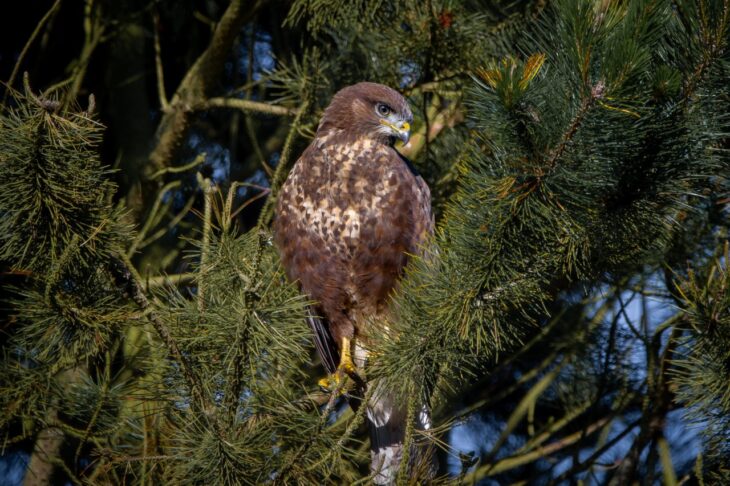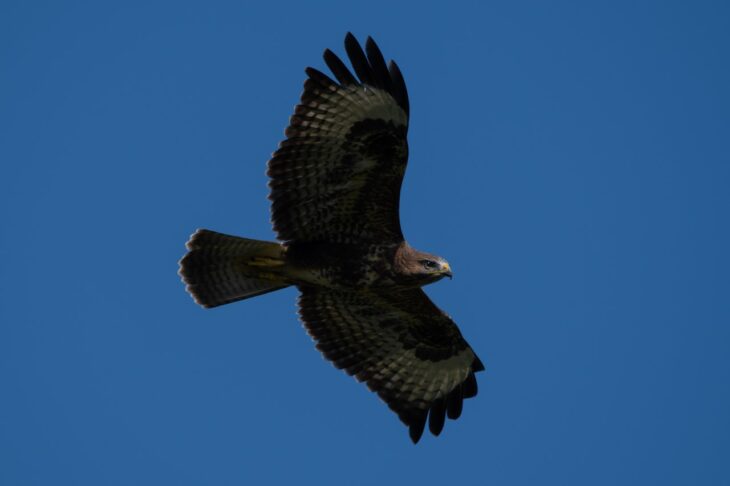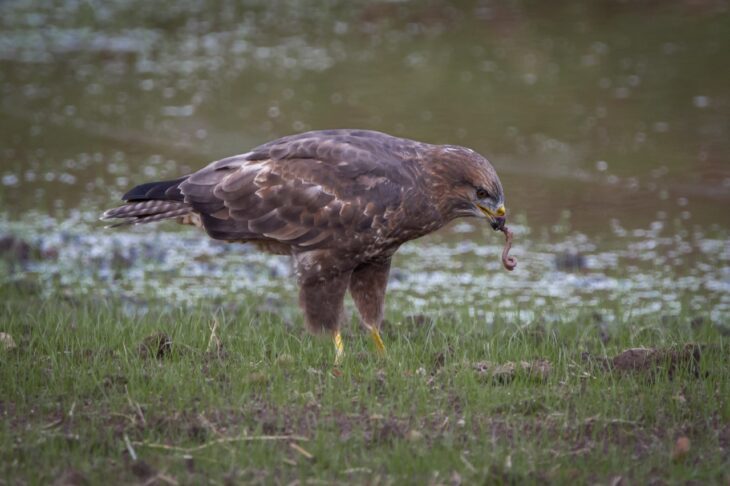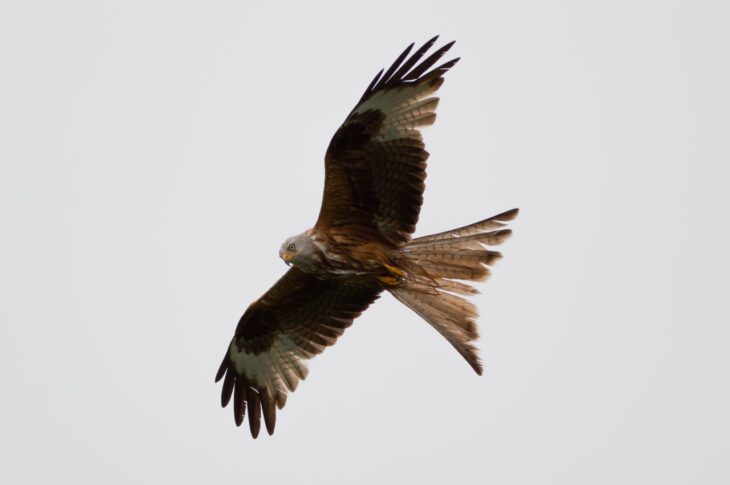‘Just’ a buzzard?
This week, local photographer and regular guest blogger Daryl Smith takes a look at a bird we now often take for granted…the buzzard.

No matter where you are in Scotland, buzzards are a frequent sight. From soaring high in highland glens to perching on telegraph poles along busy motorways. They have inhabited mountain ranges, woodlands, moorlands and even cities. Buzzards have adapted to survive in almost every variation of habitat in Scotland and are now so common that there is a well-used phrase; ‘it’s just a buzzard’.
Due to these raptors being almost everywhere they are often confused with other species, especially golden eagles when seen in the Highlands. It is an easy error to make for the untrained eye as buzzards and eagles do have some similarities in appearance. This common mistake has given buzzards their other name, the ‘tourists eagle’. However, if you take a buzzard’s 4ft wingspan and compare it with a golden eagle’s 7ft wingspan, there is a clear noticeable difference.

My first ever sighting of a bird of prey in the wild was a buzzard and it was also my first bird of prey I photographed in the wild. I remember being captivated whenever I saw one. I practised and improved my fieldcraft substantially, trying to get close to buzzards. But when I moved onto photographing eagles and other rarely seen raptors, I regrettably fell into the trap of thinking buzzards were ‘just buzzards’, in other words, boring.
But how can a bird such as a buzzard possibly be classed as boring? They are one of the greatest conservation success stories in the UK after coming back from record low numbers of 1,000 breeding pairs to around 70,000. They have been recorded soaring over 1,000 metres high and with horizontal flying speeds of 40km/h. They are large, powerful and truly fantastic birds of prey which I did not fully appreciate in the past.
For such a large bird their diets are not what you would think. Buzzards do hunt when they have to, such as rabbits, voles, birds and frogs. They will also eat carrion whenever they come across it. However, a big part of their diet is actually earthworms and other small insects. I do have to be honest I find it rather humorous seeing such a fierce powerful bird swoop down to grab an earthworm, but this flexibility has most likely played a vital part in the species recovery.

One of my favourite characteristics of buzzards has to be their unique unmistakable call. I struggle to describe their call in words other than a high-pitched whistle, but some compare it to a cat calling. You will know what I mean if you have heard it but if you haven’t then now is the time of year to go out and listen as all the juveniles are flying around making use of their new found voices.
I feel it is worthy to note that while out photographing a local family of five buzzards last week for this blog I recorded my first red kite in Lanark. I was sitting watching the juvenile buzzards showing off their new skills to one another when a sixth raptor came into the area. Originally I presumed it was a sixth buzzard but I instantly noticed the large forked tail and realised it was a red kite. Red kites are another success story after being reintroduced in 1996. It was overwhelming to see one finally in this area and it proves the point I have mentioned before, in nature you never know what will show up.
Daryl Smith, wildlife photographer

Help protect Scotland’s wildlife
Our work to save Scotland’s wildlife is made possible thanks to the generosity of our members and supporters.
Join today from just £4 a month to help protect the species you love.
Preface
This week, local photographer and regular guest blogger Daryl Smith takes a look at a bird we now often take for granted…the buzzard. No matter where you are in Scotland, …
